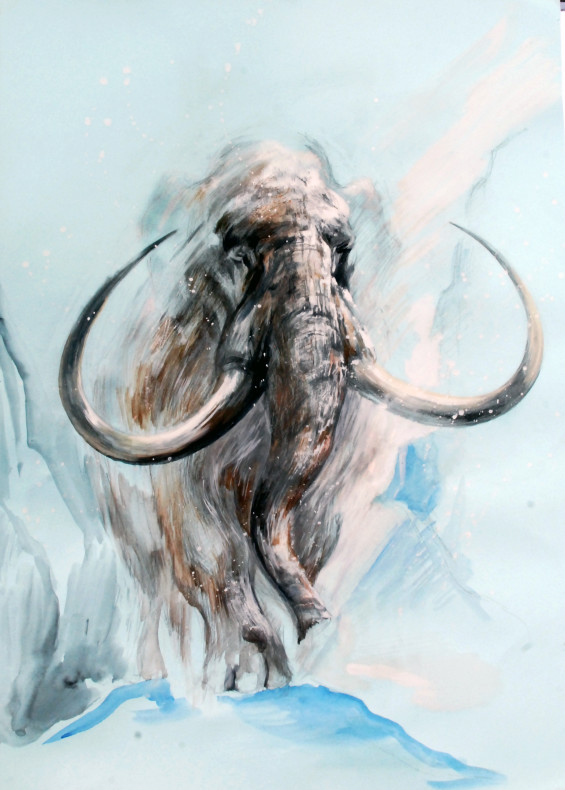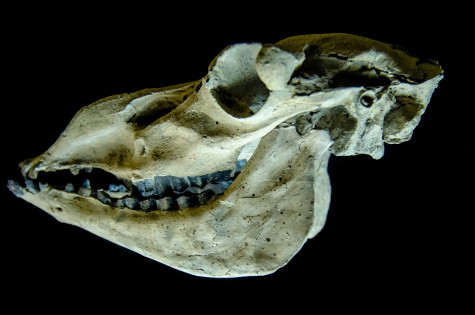 It would have been different if it hadn’t been a cave, if the excavation had been out in the daylight where mystery more easily washes out.
It would have been different if it hadn’t been a cave, if the excavation had been out in the daylight where mystery more easily washes out.
The darkness helped, nothing but my headlamp to show the way. Every morning we’d suit up at the cave entrance. A group of scientists descended a ladder one by one, packs filled with notebooks and tools. I had gotten onto the excavation by working at the base camp as a cook. They let me dig because they needed all the hands they could get. Bones were coming out of the cave by the thousands, a rich Pleistocene horizon. It was called Porcupine Cave, located in the dry, piney foothills of southern Colorado near South Park, 9,000 feet in elevation.
The ground inside was dusty, uneven, our lights probing rough rock passages. Woodrat urine streaked the walls, smelling like rotten molasses, a stench that went away after several hundred feet of creeping and boulder-hopping into cool, absolute darkness. In the bowels of this cave, an incalculable number of bones rested among each other, remains of cheetahs, sloths, sparrows, and bears. My job was an American camel. It was out on the edge of things under an uncomfortably low ceiling.
Other rooms had flood lights and sifting screens, diggers laughing and talking. The camel was alone. Nobody else wanted the assignment. They gave it to the cook.
The skull was the size of a football, an oddly-shaped lump of clay that took me weeks to dig out. I rested on my side and began scraping and brushing around the camel’s moist, collapsed eye socket. I crawled and twisted whenever the angle needed changing, causing my tools to slowly disperse over the course of the day. I may have left an artifact or two myself, the first evidence of human-megafauna interaction in this cave.
The camel was at least 300,000 years old, which put it before humans in North America. It had never known the likes of us, no spears, no fires with stick-figure animals standing around. I was a foreigner here and I knew it. Sometimes I would whisper to it as I reached into its eye socket, or grazed along its cheekbone, asking permission to take out another gram of soil.
The camel had picked a low place to die, the skull and its entire skeleton tucked back in corner of the cave, close enough to the original entrance a faint blue light would have bounced from to rock to rock. It must have entered injured, either fallen in, or was swiped by a 400-pound scimitar cat and made it this far to die. I let my mind drift in the long, tedious hours of excavation, sometimes turning off my headlamp and going by sound in complete darkness. I would rise up through the former entrance and step out of the cave, noticing that the ancient sunlight around me wasn’t much different. Brightened slightly by glaciers that crept over surrounding mountains, the sky seemed silver-blue.
Shielding my eyes in the clear light, I saw wheeling in the sky Pleistocene condors, bone-cleaning carrion hunters with dark, 12-foot wingspans fit for all the meat that would have been available, a protein revolution. Shaggy shapes roamed the valleys, tusk and saber-tooth gathered in herds, packs, scattered off alone. And no matter how far I looked, I saw no people.
You might think it would feel lonely, not another person on the entire land, but I felt liberated. The air tasted bright and I wanted to walk, to move. As if a magnet were pulling equally from all directions, I felt drawn to everything, valleys leading away to who knows where. I relished sounds of mastodons fisting up grass in their trunks, and the howling of big-skulled dire wolves far away.
Of course, all I could actually hear was the scratch scratch of my dental pick, and the hush of my artist’s brush flicking away crumbs of dirt. I suppose I could hear the dark silence, too, surrounding me as if I were at the bottom of a sea. Immersed in ancient bones and blackness, I inhabited two worlds at once, one wholly occupied continent streaming with lights and highways, humans long-settled on this side of the world, the other the black bottom of a cave where a camel died on a continent that had never — not yet — known our kind.
One thought on “Dreaming in the Pleistocene”
Comments are closed.